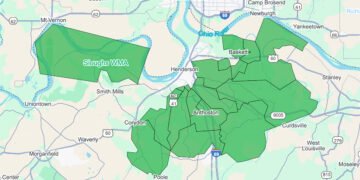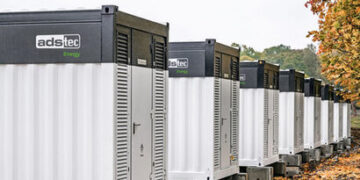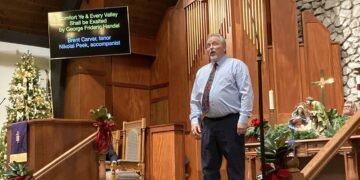Courtesy of Kentucky Lantern
Natasha DeJarnett, a University of Louisville assistant professor of medicine, said her specialty is air quality and heart disease, though in recent months she’s been talking much more with community members about another topic: a possible influx of data centers.
A wide range of questions and concerns have come up: What data centers could mean for utility and electricity costs; where data centers will be placed; how nearby property values could be impacted; and how data centers will impact public health?
DeJarnett, speaking Monday at the 49th annual Governor’s Conference on Energy and the Environment hosted by the Kentucky Energy and Environment Cabinet, remembered talking with someone from Dulles, Virginia, one of the nation’s biggest hubs for massive, electricity-intensive “hyperscale” data centers.
“What she said was, ‘You don’t want a data center in your backyard.’ And I think that’s been a common conversation that we’ve heard in these community meetings,” DeJarnett said. “People are deeply concerned about their families and their children and the future of their children.”
DeJarnett, other University of Louisville researchers and an attorney with the environmental legal group Kentucky Resources Council told the audience of state officials and industry stakeholders the answers to questions about data centers’ impacts remain to be seen.
But the potential considerations, both positive and negative, of what these large-scale operations could bring to Kentucky communities are numerous.
“Hyperscale” data centers are essentially massive computer warehouses that support a range of online services from artificial intelligence to credit card processing. These data centers also tend to use a tremendous amount of electricity to power the computers and water to cool them. A number of data center developers are eyeing Kentucky, particularly after state lawmakers enhanced tax incentives for such operations.
Based on conversations she’s had in Jefferson County, Oldham County and outside of Kentucky, DeJarnett said one of the primary considerations is the location of a data center. She pointed to research by the California-based Kapor Foundation that found data center locations in that state tend to be in places that already have heavier pollution, including minority communities that stand to be disproportionately affected by data centers.
Byron Gary, the Kentucky Resources Council attorney on the panel, pointed to a proposed data center along Camp Ground Road in western Jefferson County in a “predominantly black, predominantly low-income neighborhood” in an area “already overburdened with industry.”
Yet another consideration discussed by the panel: the cost of electricity infrastructure, both generating power and transmitting it, to serve data centers and how much average ratepayers should bear.
Ted Smith, the panel’s moderator and director of the University of Louisville’s Center for Health Air, Water and Soil, referenced reporting from the Wall Street Journal that compared the scale of data center construction to the boom and bust of railroad expansion in the 19th century. When railroad companies went bankrupt, it left the excess railroad tracks as stranded assets.
Overbuilding electrical capacity could burden consumers, he said, as the costs to build excess power infrastructure to support data centers could be passed to ratepayers if there’s a downturn in demand for data center services.
In one instance, Kentucky’s utility regulator is considering a request from Kentucky’s largest utility to build billions of dollars in new gas-fired power generation to support prospective data centers.
Dan Diorio, the vice president of state policy for the industry group Data Center Coalition representing data center companies, in an emailed statement to the Lantern said data centers “strive to be good neighbors in the communities where they operate.”
“The data center industry takes compliance and accountability seriously and works closely with the many local, state, regional and federal bodies responsible for permitting and project approvals” including environmental safety and oversight, Diorio said.
The industry group representative said data center companies “site projects” through local zoning regulations and “work with residents to limit impacts.”
“In return, data centers bring billions of dollars in investment, create well-paying jobs, and generate tax revenue that helps fund schools, roads, public safety and other community priorities,” Diorio said.
Gary, the attorney, said such large data centers do create some jobs, and some communities “are desperately in need of more funding for schools” in the form of property taxes. But the benefits and drawbacks of such a large project, he said, need to be debated in public.
He said that public debate isn’t necessarily an opportunity for a community to “shout” down a data center project but instead an opportunity to ask questions about how it could best serve a community.
“Transparency has to be a part of it.” Gary said. “They have a say in, ‘Is this the best place for it? What benefit are we going to get as a community?’”
This story was updated with a statement from the industry group Data Center Coalition.
Kentucky Lantern is part of States Newsroom, the nation’s largest state-focused nonprofit news organization.




















